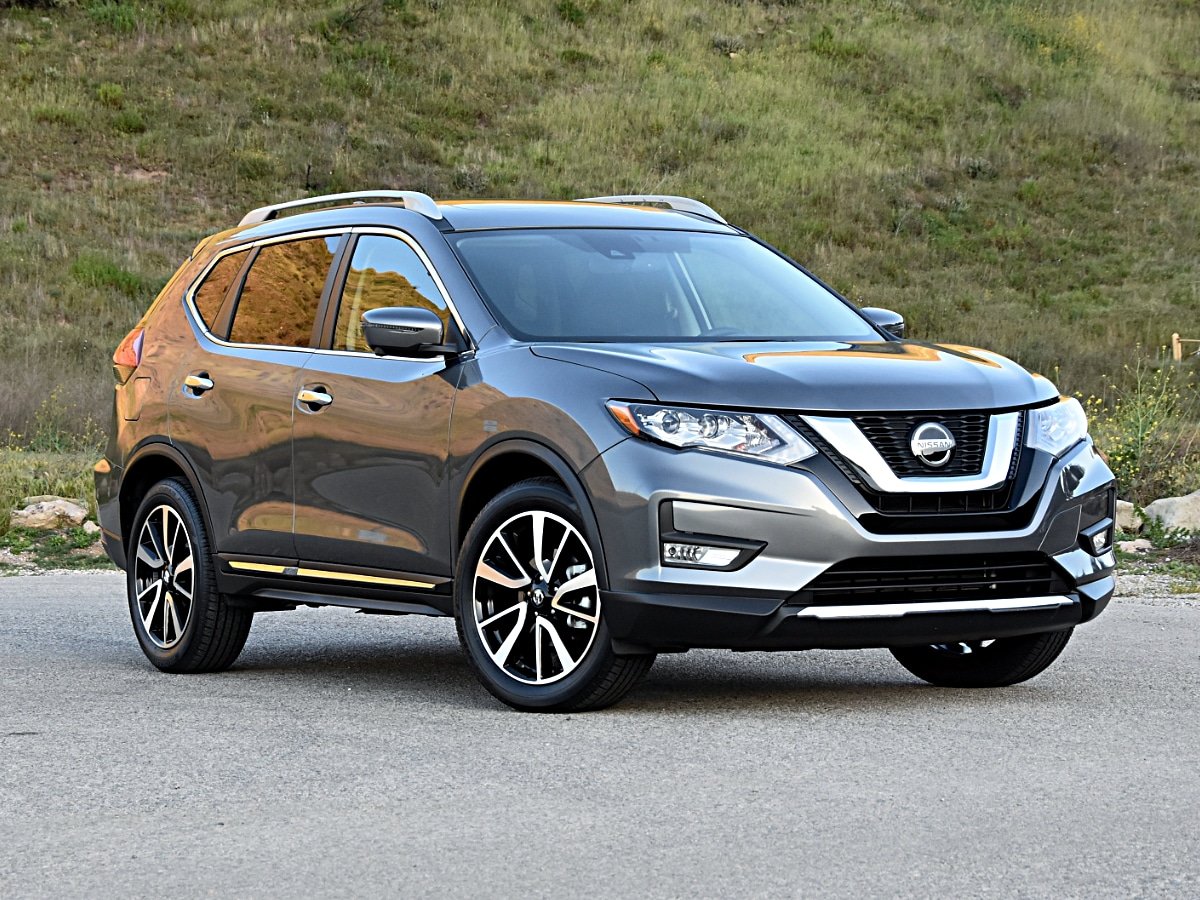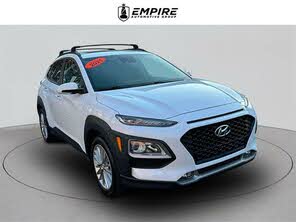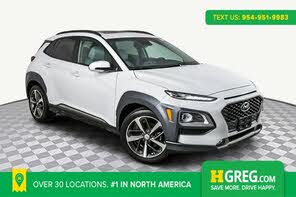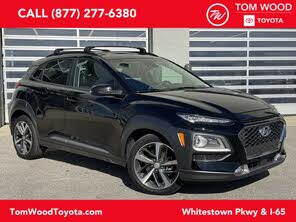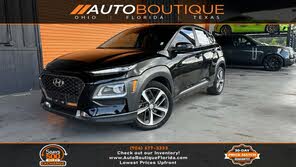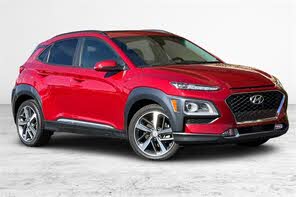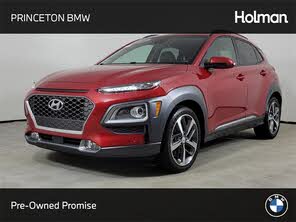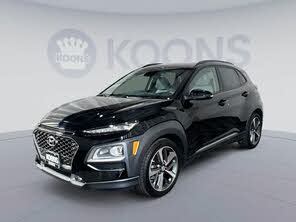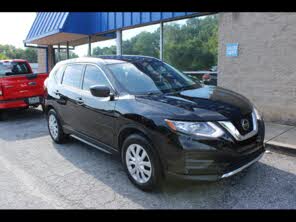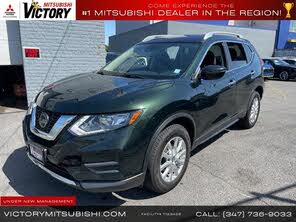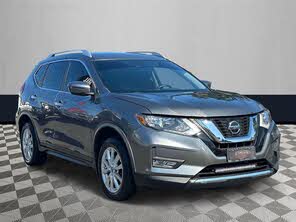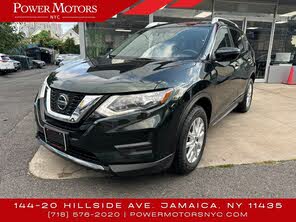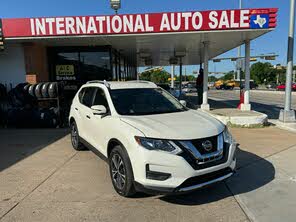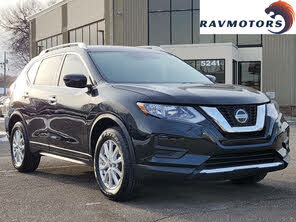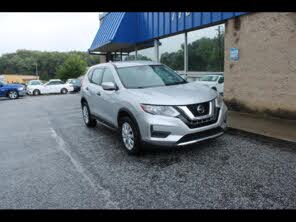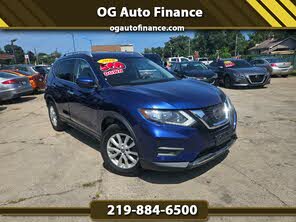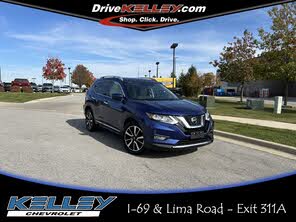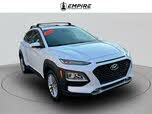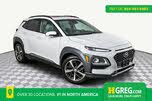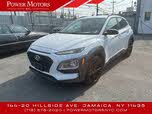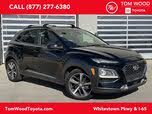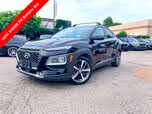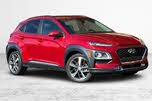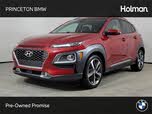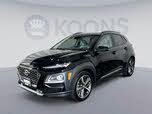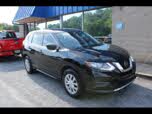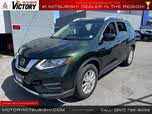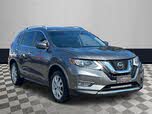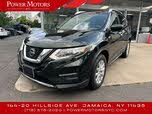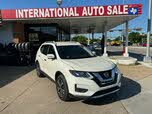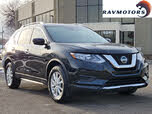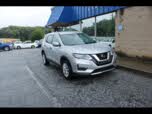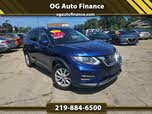2021 Hyundai Kona vs 2020 Nissan Rogue
Overview | |
MSRP$25,490 | MSRP$20,500 |
Average price$17,493 | Average price$18,168 |
Listings1346 | Listings795 |
Ratings & Reviews | |
User Reviews | User Reviews |
Expert reviews6.0 out of 10 | Expert reviews7.2 out of 10 |
Pros
| Pros
|
2020 Nissan Rogue Reviews SummaryNissan hasn’t redesigned the Rogue since 2014, but an all-new version of this SUV is coming for the 2021 model year. In the meantime, dealers will be eager to sell remaining stocks of the outgoing 2020 Nissan Rogue, and the deals on these new cars ought to be mighty juicy. Should you bite? Should you wait? Or should you shop for something else? The answers to these questions depend on who you are and what you value in a compact crossover SUV. | |
2021 Hyundai Kona Reviews SummaryAfter three years on the market, the Hyundai Kona continues to wow with great features, strong styling, and decent specs. The 2021 model year brings subtle changes to the Kona lineup, including new colors, a new Night Edition with Rays semi-gloss black 18-inch wheels, and gloss black exterior and interior accents. Hyundai offers the Kona in several trims: SE, SEL, SEL Plus, Night Edition, Limited, and Ultimate. A Hyundai Kona Electric model is available as well, but we'll cover that in a separate overview. A high-performance Kona N will be available for the 2022 model year. The Hyundai Kona competes with subcompact SUVs that include the Kia Soul, Volkswagen Taos, Mazda CX-30, Subaru Crosstrek, Nissan Kicks, Hyundai Venue, and Toyota C-HR. Given its size and price, buyers may also cross-shop the larger Hyundai Tucson. New car buyers have many other choices, then, but the Kona still stands out as a value-forward crossover with a long warranty and plenty of standard features. | |
No video found | No video found |
Popular Features & Specs | |
Engine2.5L 170 hp I4 | Engine2.0L 147 hp I4 |
Drive TrainFWD | Drive TrainFWD |
Seating Capacity5 | Seating Capacity5 |
Horsepower170 hp @ 6000 rpm | Horsepower147 hp @ 6200 rpm |
MPG City26 | MPG City27 |
MPG Highway33 | MPG Highway33 |
Engine | |
Engine Name2.5L 170 hp I4 | Engine Name2.0L 147 hp I4 |
Torque175 lb-ft @ 4400 rpm | Torque132 lb-ft @ 4500 rpm |
Horsepower170 hp @ 6000 rpm | Horsepower147 hp @ 6200 rpm |
DrivetrainFWD | DrivetrainFWD |
Fuel Economy | |
MPG City26 | MPG City27 |
MPG Highway33 | MPG Highway33 |
Interior | |
Seating Capacity5 | Seating Capacity5 |
Safety | |
Front Crash Overall4 | Front Crash Overall5 |
Side Crash Overall5 | Side Crash Overall5 |
Dimensions & Capacity | |
Cargo Space39.3 cu ft | Cargo Space19.2 cu ft |
Curb Weight3463 lbs | Curb Weight2890 lbs |
Height66.3 in | Height61.0 in |
Length184.5 in | Length164.0 in |
Width72.4 in | Width70.9 in |
Wheelbase106.5 in | Wheelbase102.4 in |
Maximum Payload1127 lbs | Maximum Payload1089 lbs |
Number of doors4 | Number of doors4 |
Overview | ||
MSRP | $25,490 | $20,500 |
Average price | $17,493 | $18,168 |
Listings | ||
Ratings & Reviews | ||
User reviews | ||
Expert reviews | 6.0 out of 10Read full review | 7.2 out of 10Read full review |
Pros & cons | Pros
| Pros
|
Summary | Nissan hasn’t redesigned the Rogue since 2014, but an all-new version of this SUV is coming for the 2021 model year. In the meantime, dealers will be eager to sell remaining stocks of the outgoing 2020 Nissan Rogue, and the deals on these new cars ought to be mighty juicy. Should you bite? Should you wait? Or should you shop for something else? The answers to these questions depend on who you are and what you value in a compact crossover SUV. | After three years on the market, the Hyundai Kona continues to wow with great features, strong styling, and decent specs. The 2021 model year brings subtle changes to the Kona lineup, including new colors, a new Night Edition with Rays semi-gloss black 18-inch wheels, and gloss black exterior and interior accents. Hyundai offers the Kona in several trims: SE, SEL, SEL Plus, Night Edition, Limited, and Ultimate. A Hyundai Kona Electric model is available as well, but we'll cover that in a separate overview. A high-performance Kona N will be available for the 2022 model year. The Hyundai Kona competes with subcompact SUVs that include the Kia Soul, Volkswagen Taos, Mazda CX-30, Subaru Crosstrek, Nissan Kicks, Hyundai Venue, and Toyota C-HR. Given its size and price, buyers may also cross-shop the larger Hyundai Tucson. New car buyers have many other choices, then, but the Kona still stands out as a value-forward crossover with a long warranty and plenty of standard features. |
Video | No video found | No video found |
Popular Features & Specs | ||
Engine | 2.5L 170 hp I4 | 2.0L 147 hp I4 |
Drive Train | FWD | FWD |
Seating Capacity | 5 | 5 |
Horsepower | 170 hp @ 6000 rpm | 147 hp @ 6200 rpm |
MPG City | 26 | 27 |
MPG Highway | 33 | 33 |
Engine | ||
Engine Name | 2.5L 170 hp I4 | 2.0L 147 hp I4 |
Torque | 175 lb-ft @ 4400 rpm | 132 lb-ft @ 4500 rpm |
Horsepower | 170 hp @ 6000 rpm | 147 hp @ 6200 rpm |
Drivetrain | FWD | FWD |
Fuel Economy | ||
MPG City | 26 | 27 |
MPG Highway | 33 | 33 |
Interior | ||
Seating Capacity | 5 | 5 |
Safety | ||
Front Crash Overall | 4 | 5 |
Side Crash Overall | 5 | 5 |
Dimensions & Capacity | ||
Cargo Space | 39.3 cu ft | 19.2 cu ft |
Curb Weight | 3463 lbs | 2890 lbs |
Height | 66.3 in | 61.0 in |
Length | 184.5 in | 164.0 in |
Width | 72.4 in | 70.9 in |
Wheelbase | 106.5 in | 102.4 in |
Maximum Payload | 1127 lbs | 1089 lbs |
Number of doors | 4 | 4 |
The 2020 Nissan Rogue, available in S, SV, and SL trims, offered a straightforward design with a single engine and transmission choice, and options for front-wheel or all-wheel drive. The test model, an SL trim with front-drive, included the SL Premium Package and additional accessories, totaling $34,870. Despite its age, the Rogue maintained an attractive appearance, though the V-Motion grille and fender swells were somewhat exaggerated. The 19-inch aluminum wheels added to its appeal. Inside, the Rogue's age showed through its waterfall control panel and rounded interior forms, which contrasted with modern design trends. The plastic surfaces were unimpressive, but the padded center console sides were a thoughtful touch for driver comfort.
The 2021 Hyundai Kona presented a funky, youthful design that mixed mild and wild elements. Its front featured a busy grille flanked by various lighting elements, appealing to younger buyers. The rear was more subdued, with a standard crossover shape. Inside, the Kona mirrored its exterior's playful attitude without being overly whimsical. The seats had neat patterns and standard cloth upholstery, with leather available on higher trims. The interior layout was simple and intuitive, featuring a high-mounted infotainment touchscreen and physical climate controls, making it user-friendly in the Kona's compact space.
The 2020 Nissan Rogue came with a single powertrain: a 170-horsepower 2.5-liter four-cylinder engine paired with a continuously variable automatic transmission (CVT). Weighing up to 3,671 pounds, the Rogue's power was adequate but not sporty, even with a Sport driving mode. The CVT managed the power well, but the Rogue struggled with acceleration, especially on freeways or steep grades, often responding with noise rather than action. The EPA estimated 29 mpg for FWD models, but testing showed a disappointing 24.9 mpg. The Rogue's ride and handling benefited from Intelligent Trace Control and Active Ride Control, but it wasn't particularly fun to drive, with heavy steering and occasional CVT drone.
The 2021 Hyundai Kona offered two powertrain options: a base 2.0-liter four-cylinder engine with 147 horsepower and a turbocharged 1.6-liter engine with 195 horsepower. The base engine came with a six-speed automatic transmission, while the turbo engine had a seven-speed dual-clutch automatic. FWD was standard, with AWD available for an extra cost. Neither engine was exceptionally powerful, but both provided sufficient power for city and highway driving. The dual-clutch transmission enhanced the sporty feel but was less smooth at low speeds. The Kona handled confidently, offering agility and engagement, with enough comfort for smooth rides on curvy roads. Fuel economy varied by configuration, with the base engine and FWD achieving 30 mpg combined.
The 2020 Nissan Rogue's interior posed challenges for taller drivers, as the seat height and legroom were difficult to adjust for comfort. The seats, though undersized, featured Nissan's Zero Gravity design and Quick Comfort heating. Rear passengers enjoyed a high seat cushion, good thigh support, and a panoramic sunroof, making it a preferred spot for adults and children. In-cabin storage was limited, but the cargo area offered 39 cubic feet of space, with underfloor storage and a Divide-n-Hide system for added utility.
The 2021 Hyundai Kona provided decent headroom and legroom for front-seat passengers, with controls easily accessible. The front seats were wide and well-padded but lacked support for spirited driving. Rear passengers had good headroom but limited legroom, though large rear door openings facilitated child seat installation. The Kona's cargo space was limited compared to competitors, but folding rear seats expanded the area. Small-item storage was generous, with large door pockets and a spacious center console.
The 2020 Nissan Rogue featured a range of infotainment options, including Bluetooth, Apple CarPlay, Android Auto, and a hands-free text messaging assistant. Upgrades included SiriusXM, navigation, a Bose sound system, and NissanConnect Services with features like Amazon Alexa and remote access. However, the 7-inch touchscreen interface was outdated, with slow response times and subpar voice recognition, detracting from the overall tech experience.
The 2021 Hyundai Kona came with an eight-inch touchscreen, Bluetooth, six speakers, wireless Apple CarPlay and Android Auto, and USB inputs. Available features included SiriusXM, navigation, wireless charging, a Harman Kardon audio system, and a 10.25-inch touchscreen. The infotainment system was simple, colorful, and responsive, making it easy to navigate and access features. Wireless Apple CarPlay and Android Auto were significant advantages, especially for lower trims.
The 2020 Nissan Rogue included standard Safety Shield 360, with features like forward-collision warning, automatic emergency braking, blind-spot monitoring, and lane departure warning. Additional options included a surround-view camera and ProPilot Assist. However, the Rogue's safety technology felt dated, and its crash-test ratings were less impressive, with a 4-star overall rating from NHTSA and issues with frontal-impact protection.
The 2021 Hyundai Kona earned a Top Safety Pick from IIHS and a five-star overall rating from NHTSA. Standard safety features included forward-collision warning, lane-keeping assist, automatic emergency braking, and adaptive cruise control. Optional features included blind-spot monitoring and a head-up display, providing comprehensive safety coverage.
CarGurus highlights

According to CarGurus experts, the overall rating for the 2020 Nissan Rogue is 6.0 out of 10, while the 2021 Hyundai Kona scores 7.2 out of 10. Based on these ratings, the 2021 Hyundai Kona is the recommended choice, offering a more engaging driving experience, better technology, and superior safety features.
Choose the 2021 Hyundai Kona if:
- You seek a fun, youthful design with engaging driving dynamics.
- You want modern technology with wireless smartphone integration.
- You prioritize top safety ratings and comprehensive safety features.
Choose the 2020 Nissan Rogue if:
- You prioritize rear passenger comfort and panoramic views.
- You need ample cargo space and utility features.
- You value a straightforward, no-frills driving experience.
CarGurus highlights

According to CarGurus experts, the overall rating for the 2020 Nissan Rogue is 6.0 out of 10, while the 2021 Hyundai Kona scores 7.2 out of 10. Based on these ratings, the 2021 Hyundai Kona is the recommended choice, offering a more engaging driving experience, better technology, and superior safety features.
Choose the 2021 Hyundai Kona if:
Shop Now- You seek a fun, youthful design with engaging driving dynamics.
- You want modern technology with wireless smartphone integration.
- You prioritize top safety ratings and comprehensive safety features.
Choose the 2020 Nissan Rogue if:
Shop Now- You prioritize rear passenger comfort and panoramic views.
- You need ample cargo space and utility features.
- You value a straightforward, no-frills driving experience.

By: CarGurus + AI
At CarGurus, our team of experienced automotive writers remain at the heart of our content operation, conducting hands-on car tests and writing insightful guides that are backed by years of industry experience. To complement this, we are harnessing AI to make our content offering more diverse and more helpful to shoppers than ever. To achieve this, our AI systems are based exclusively on CarGurus content, ratings and data, so that what we produce is both unique to CarGurus, and uniquely helpful to car shoppers.
